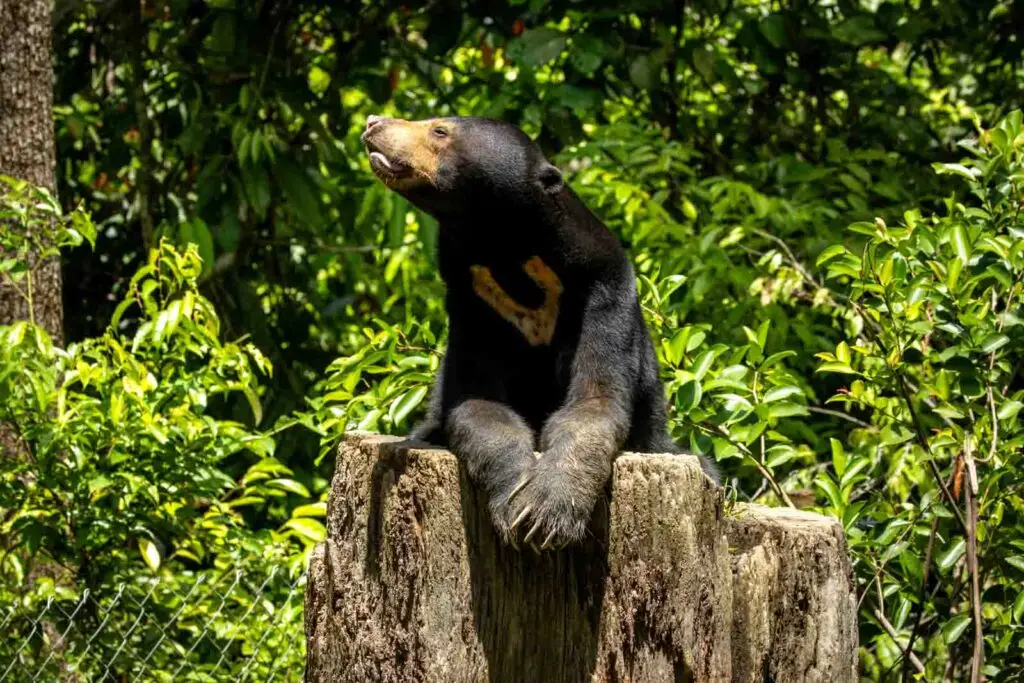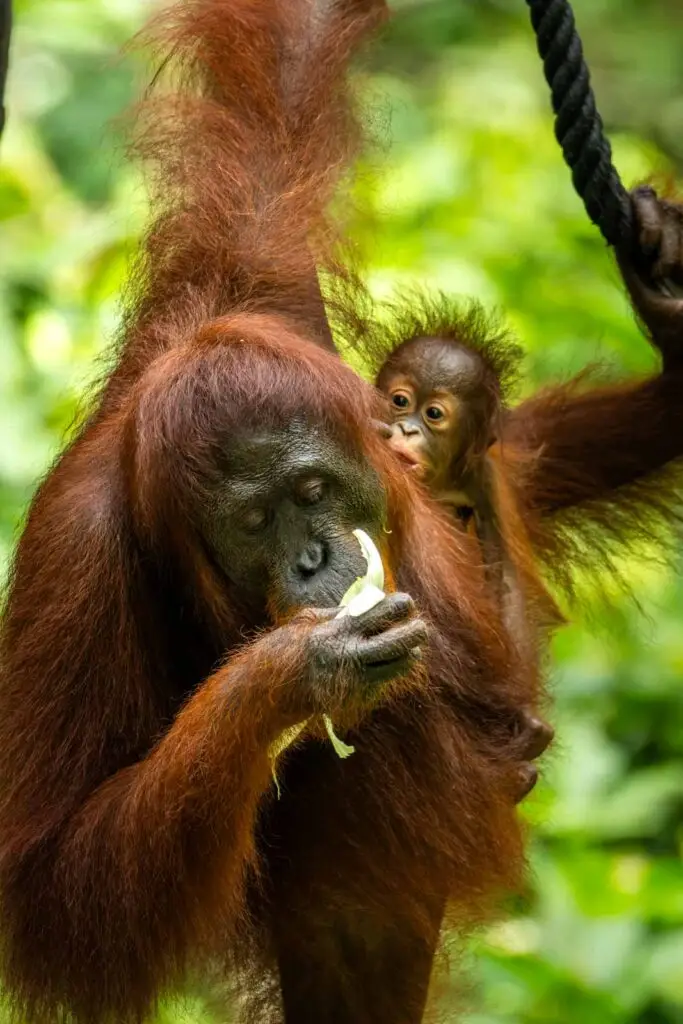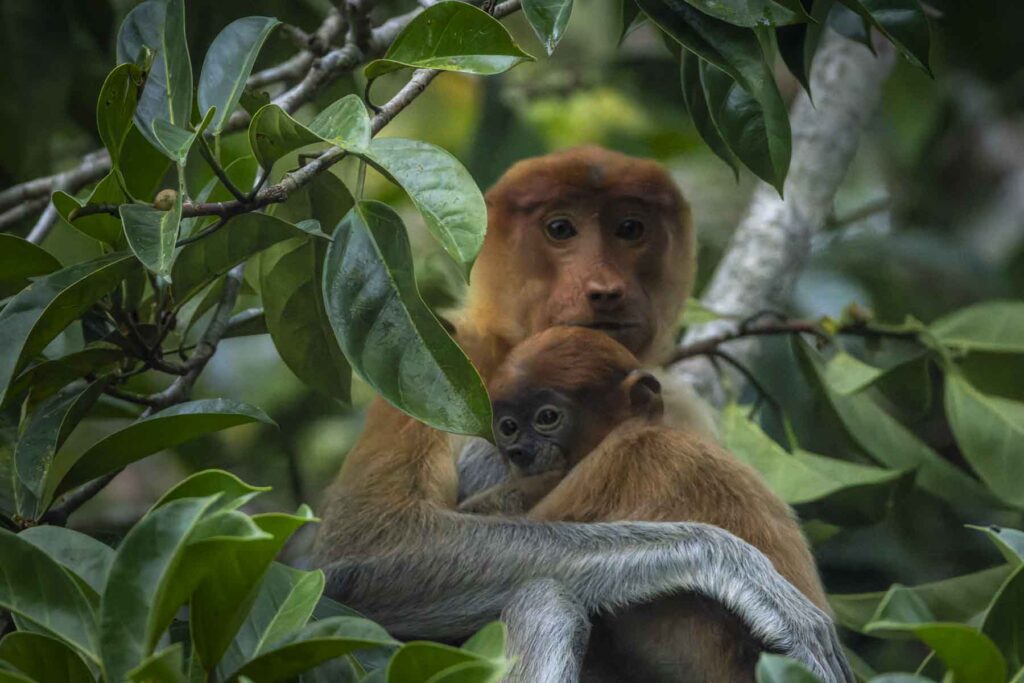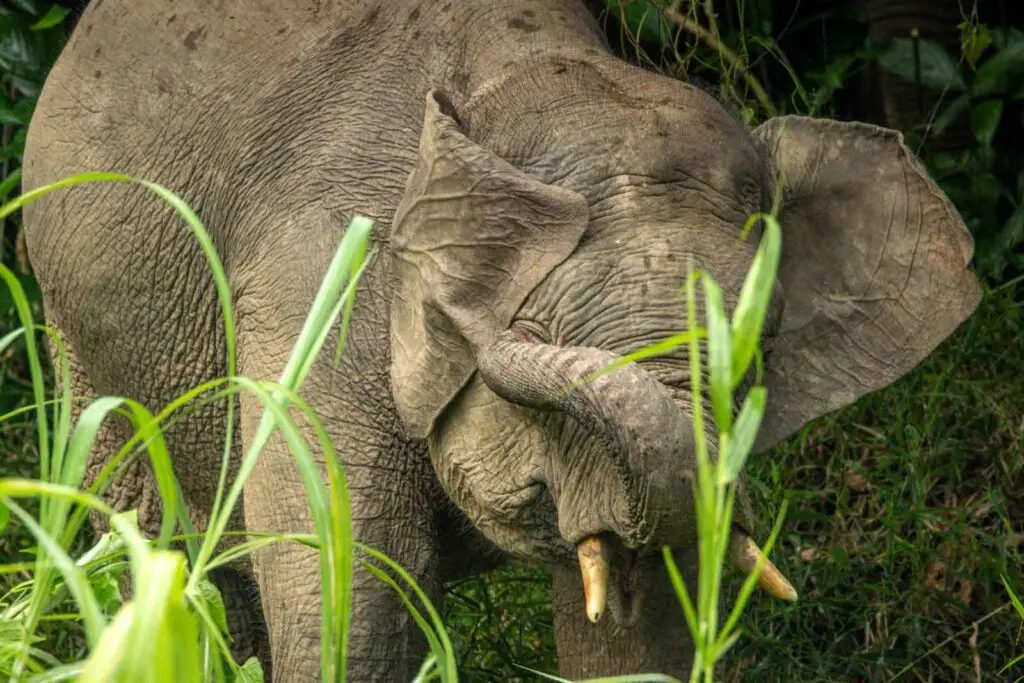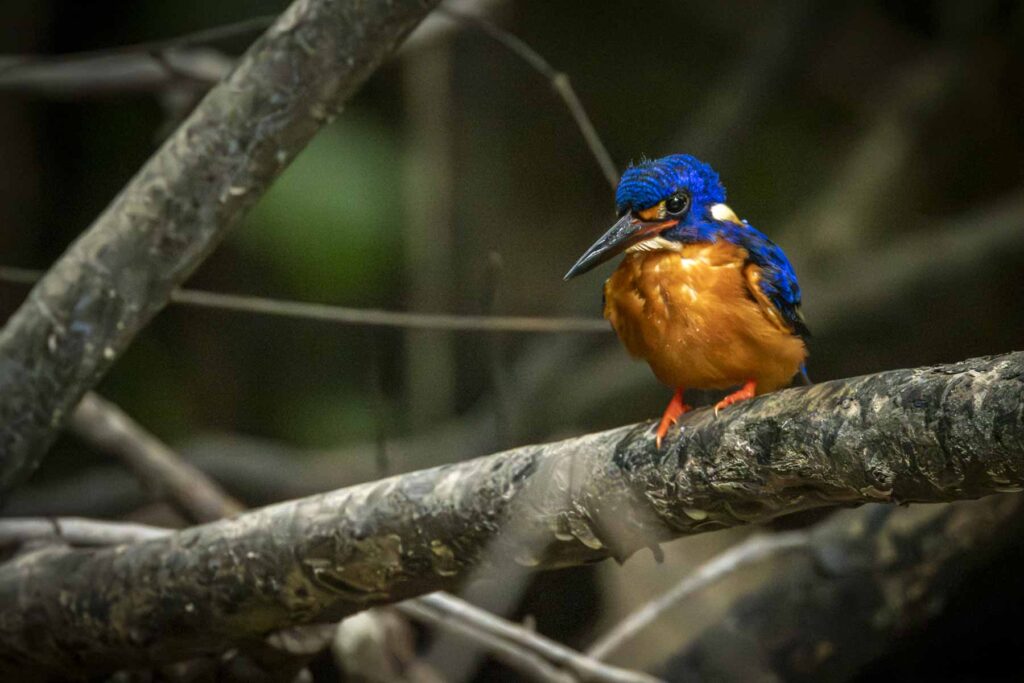Malaysia
Searching for wildlife in the rivers of Borneo
We’re busy watching three different species of birds in a tree, they flit from branch to branch, fluff their feathers and twist their heads. We can just make out their shapes but can’t really see the colour in their feathers. Can’t quite work out what they are.
The photographers in our group snap away, capturing the birds as only someone with a long lens can. But then in come the rhinoceros hornbills. Three of them, stealing our gaze and forcing us to follow their movements.
We watch as they dance through the air, moving from tree to tree. First one, then another, first this tree, then the tree behind it. Until finally, eight rhinoceros hornbills, with their brightly coloured, misshapen bills and their black feathers, dot the branches of a single tree.
A family, our guide Ned, tells us. They mate for life. Some of those in the tree will be juveniles, some will be partners.
We continue on, in our little boat of eight, gliding along the Kinabatangan River in Borneo, the second longest river in Malaysia. To the right, high in the treetops, we see a Wrinkle hornbill, while the squawk of a blue-eared Barbet fills the air.
Suddenly the rhinoceros hornbills are on the move again, demanding our attention once more as they fly in unison overhead. We try and keep up with them, the boat gliding faster now but the hornbills fly quicker than our boat can move. Even though they are barely flapping their wings. Even though they look like they are taking the feathered equivalent of a Sunday morning stroll.
Two Oriental pied hornbills sit on top of a leafless tree. It’s their beaks that we notice first. Bright white beaks, or are they yellow, against a black face. While a cylinder crow sits nearby. It’s the only species of crow here, according to our guide. We’re not sure if he means in Borneo, in Malaysia, or in this park. But the crow fails to hold our attention. We see too many crows at home to be wowed by this crow. Not when there are hornbills and brightly coloured kingfisher to be found.
Somewhere along the riverbank our guide spots a crocodile. Not a large, fully grown five or six metre crocodile. Not the kind of crocodile that sparks fear. This is a baby crocodile, less than 50 centimetres long. Cute. He’s hiding under a tree amid branches and debris just above the water line. And we marvel at Ned’s ability to see wildlife where we see only fauna. I’m not sure if we’re more impressed by the crocodile or our guide’s eyesight.
We turn right into Oxbow Lake, a narrow offshoot of the river. So narrow we’re not sure the boat will make it through. We edge our way forward, past low hanging branches between riverbanks that almost graze the sides of our boat. Ned points out patches of mud churned up under the brush on the banks to the left and to the right of the boat.
Elephant crossings, he says.
And we peer, deep into the dense forest wondering how an elephant could walk through that forest without leaving a trace. And though we peer long and deep, we see no signs of a pygmy elephant. Not this morning.
We continue on, gliding silently through the water. It’s eerily quiet, and I’m not sure if that’s because we’ve just seen a crocodile and despite its small size we’re reminded of what else lurks here, or if it’s because it’s just so quiet now that we’re away from the main river and the other boats and tourist groups. And we’re all holding our breath, not certain that we’ll make it through and wondering how we turn the boat around if we get stuck.
The whistle of the birds pierces the silence and every now and again we hear the call of a macaque, or a proboscis monkey. We look up, watching for the rustle of leaves, of moving branches, looking for an arm, or a foot, in the hope that we might see an orangutan. Here, in the wild.
The river alleyway spews us out into a wider river once more. The silence is still there, the call of the birds still surrounds us, but the intimacy is gone.
At the end of this river we find a field of hyacinth blocking our path. But it is here that we sit for long moments watching a family of proboscis monkeys swinging, jumping, playing in the trees, while rhinoceros hornbills glide from branch to branch and a snake bird sits perched on the end of a fallen dried tree.
This is life on the river in Borneo. Before the heat of the day takes hold, before the sun is too high in the sky, the river is alive with wildlife, you just have to know how to look for it.
Fast Facts
We travelled in June 2024.
We stayed at Sukau Rainforest Lodge
We stayed here for two nights (and came back for another three a month later).
Was it long enough? You could have two nights and see everything you want to see or two nights and see nothing, it really depends on timing, luck and the ability of your guide to spot animals. We were happy with what we saw but had extra time so decided to come back to see if we could see more.
We travelled (on this particular safari) with Borneo Eco Tours. They were excellent.
Join @AllabroadAU on Instagram, FaceBook, X and YouTube for more travel chatter.
